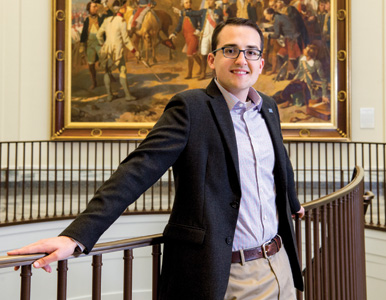
As assistant curator at the new Museum of the American Revolution in Philadelphia, Matthew Skic has seen visitors struggling with the escalating tumult that dominates political discourse today. But as he leads them through the exhibits—which chronicle America's fight for independence from such diverse perspective as the Founding Fathers to Native Americans, soldiers to slaves—he hopes to convey the point that, while the Revolutionary War ended in 1783, the American revolution continues.
"Some people are losing faith in in what the United States is supposed to be," Skic says. "But we try to bring people back. Even though the political climate is tough right now, you can still believe in this country."
The 118,000-square-foot space, which opened in April, a few blocks from Independence Hall, is the first national museum dedicated solely to the American Revolution. The museum's collection contains 500 historic objects (including the tent that housed George Washington's military headquarters) that illustrate how the struggle for independence impacted the lives of colonial Americans and how it shaped their sense of identity. "I find the individual stories fascinating and how people struggled their way through this conflict," Skic says. "In some ways they were dealing with many of the same issues that we deal with today. 'Who am I as a person? What does it mean to be an American?' There is so much that we can connect with, even though these people lived more than 200 years ago."
Ultimately, Skic says, that's the museum's core mission: to offer visitors a deep dive into the history leading up to the revolution—but also to make visitors understand the context, that this country's ongoing revolution has never been, and likely never will be, a perfect process. "We firmly believe the American Revolution is an ongoing effort to fulfill the ideals and the words of the Declaration of Independence. What we present is the dramatic beginning of the American revolution."